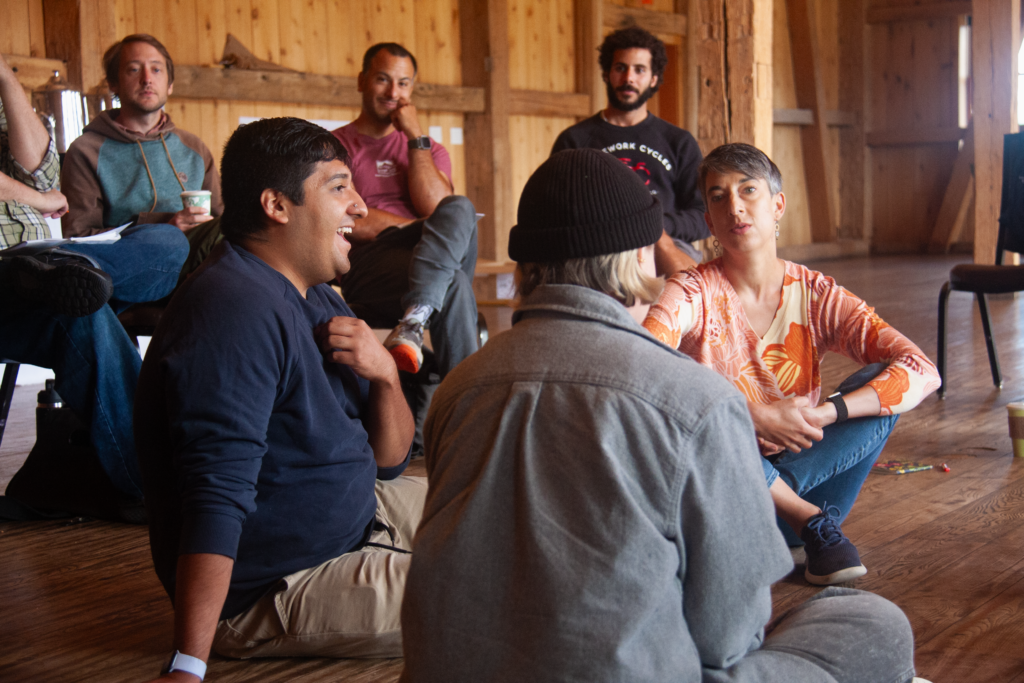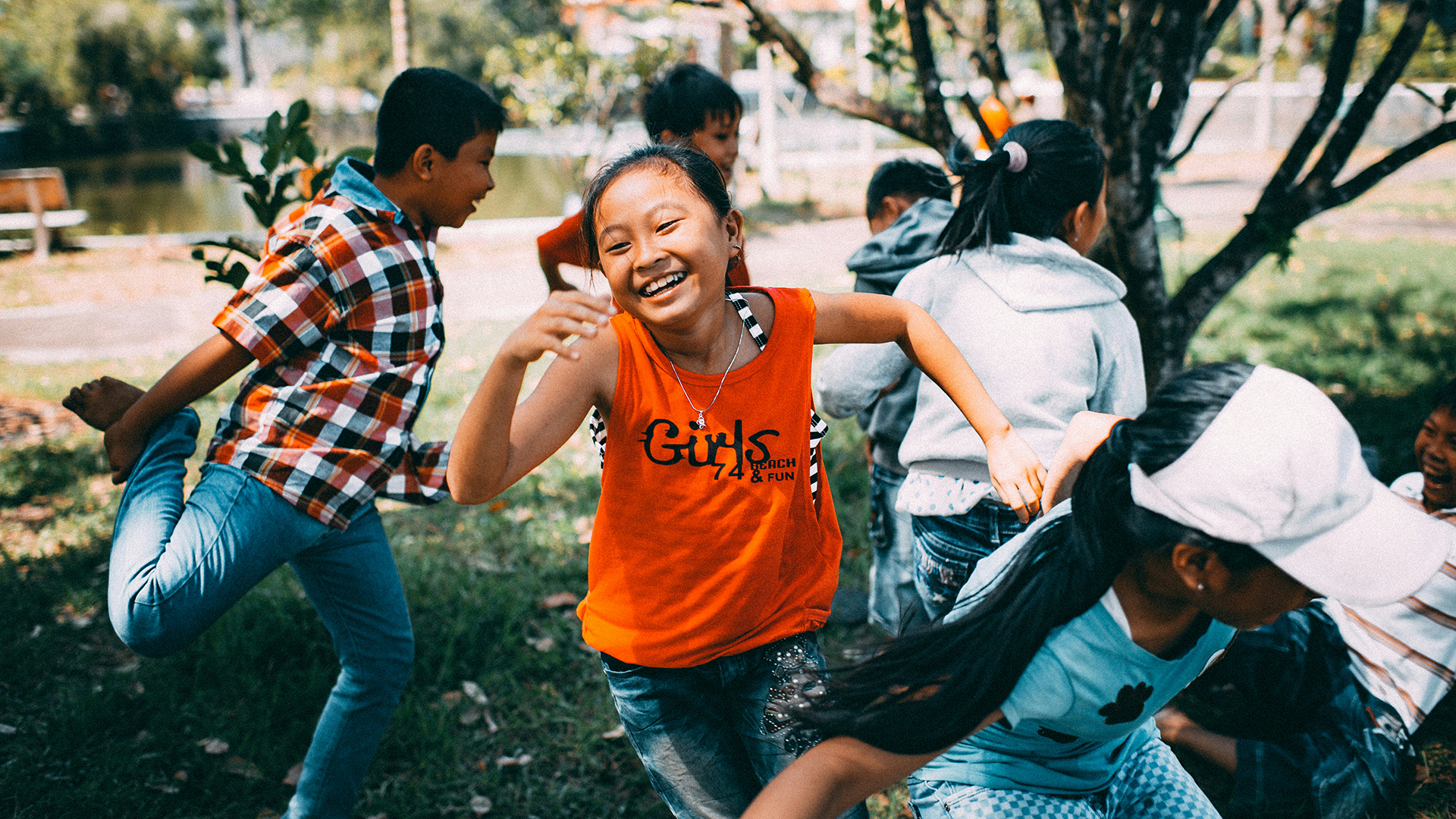A facilitator’s guide to navigating group dynamics.
Last Saturday, I took my 5-year-old daughter to a birthday party at our local playground. Watching little kids navigate social time is an anthropological experience: first, there’s the total lack of decorum (which I obviously love) — the vocal volume, the range of facial expressions (grimaces, total blankness, maniacal grins) and the incapacity to feign even a modicum of interest in, well, anything? But examine the scene more carefully, and you’ll realize that playground antics don’t look all that different from most of our workplace gatherings.
“You’re it!” screeches Towering Kid with side-swept bangs. Smaller Sidekick cackles, whacking (note: ‘tagging’) unsuspecting loner who turns away to burrow in mom’s legs. Coffee spills. Helpful Kid cleans it up. A gallery of Perimeter Kids munch on Pirate’s Booty watching the scene unfold, attentive but happily removed, using cheese dust to “fingerpaint” a nearby swing. Tag concludes instantaneously. Very Loud Kid broadcasts that it’s now time for everyone to zig-zag, backwards.
Kids, they’re just like us! What’s striking is just how early our social habits take root. And, no surprise: when we aren’t intentional about setting the conditions for cooperative play, the loudest voices tend to reign supreme. So, if you want to understand the different roles that adults play in our grown-up spaces (see: the visionary, the deflector, the peacemaker) then look no further than your local playground where you can watch group dynamics at play — literally.
Group dynamics manifest even in the most innocent of settings beginning from the moment we learn to walk. Whether we’re on the playground or in the boardroom, we all impact dynamics in groups.1 And when we are members of complex institutions – our workplaces, schools and community centers — factors like authority, credibility and influence come into play.
At Franklin Street, we think a lot about how to design and host experiences for all sorts of groups – from large, cross-functional teams working in mission-driven organizations to cohorts of professionals who are meeting for the very first time. Next month, we’re launching our very first Studio Session: Design and lead experiences that inspire. Professionals from across sectors and geographies will come together to think deeply about what it takes to foster the right conditions for diverse groups of people to build rapport, cultivate trust and ultimately, learn and create together. And this matters, because we know that groups that have a positive dynamic are nearly twice as creative than groups that don’t.2

When people convene for a shared experience, they bring different identities, experiences and backgrounds to the table to form a collective personality. As a designer and facilitator, your job doesn’t stop after you've finished writing your agenda. Before you step into the room, you have to get a real handle on who holds sway and who is vulnerable to being sidelined.
So, what can you do to prepare? Work with the information you have: you may know the team well (they could be your own colleagues!), or you may not know anyone in the room. Perhaps you’ll have the opportunity to host 1:1 phone calls prior to your event to get to know people, which we recommend. Either way, you need to consider:
Who will be in the room? Where is the potential for friction? Convergence? How can I harness these dynamics to create opportunities for learning and productivity?
At Franklin Street, one way that we routinely prepare for facilitation is to take a look at our session plan and ask ourselves five power-mapping questions. These questions help us think proactively about how to ensure that everyone – no matter their identity, positional authority, or learning and participation styles – can contribute meaningfully. These are not meant to be value judgments: an alpha is not a bad actor just because they wield influence; nor is a skeptic negative because they hold a critical lens. We all play important roles in groups, and the key is to create an inclusive environment and use practices that distribute power equitably across the group.
Download the power-mapping questions
Here’s how we use them: the designer sits down with a teammate and asks each question out loud. We share what we know about each participant, debate our respective hypotheses about where influence lies and then assess whether the activities and modalities we’ve envisioned for our gathering are the right ones to manage the dynamics in the room. As we inevitably uncover risks in our own design, we revise our plan to integrate new tactics that will maximize the chance that everyone will feel empowered to contribute.
Recognizing dynamics ahead of your gathering is crucial for fostering an inclusive environment. Yet, you have to remember: these 5 questions demand that you make some pretty blunt assumptions about the group. While we encourage you to map dynamics as best you can, it’s just as important that you don’t get too attached to your hypotheses. Really, keep an open mind: once you get in the room, you might discover that you're wrong.
In the end, your job as a facilitator is to prepare as best you can and then sense and respond to what’s in front of you. Mapping group dynamics can help you anticipate who’s the reigning tag champion, but you never know: you might end up being surprised by the person who hides behind mom’s legs when they’re “it.”
- The Mind Tools Content Team. Improving Group Dynamics. Mind Tools, Leadership and Management. ↩︎
- The Mind Tools Content Team. Improving Group Dynamics. Mind Tools, Leadership and Management. ↩︎
